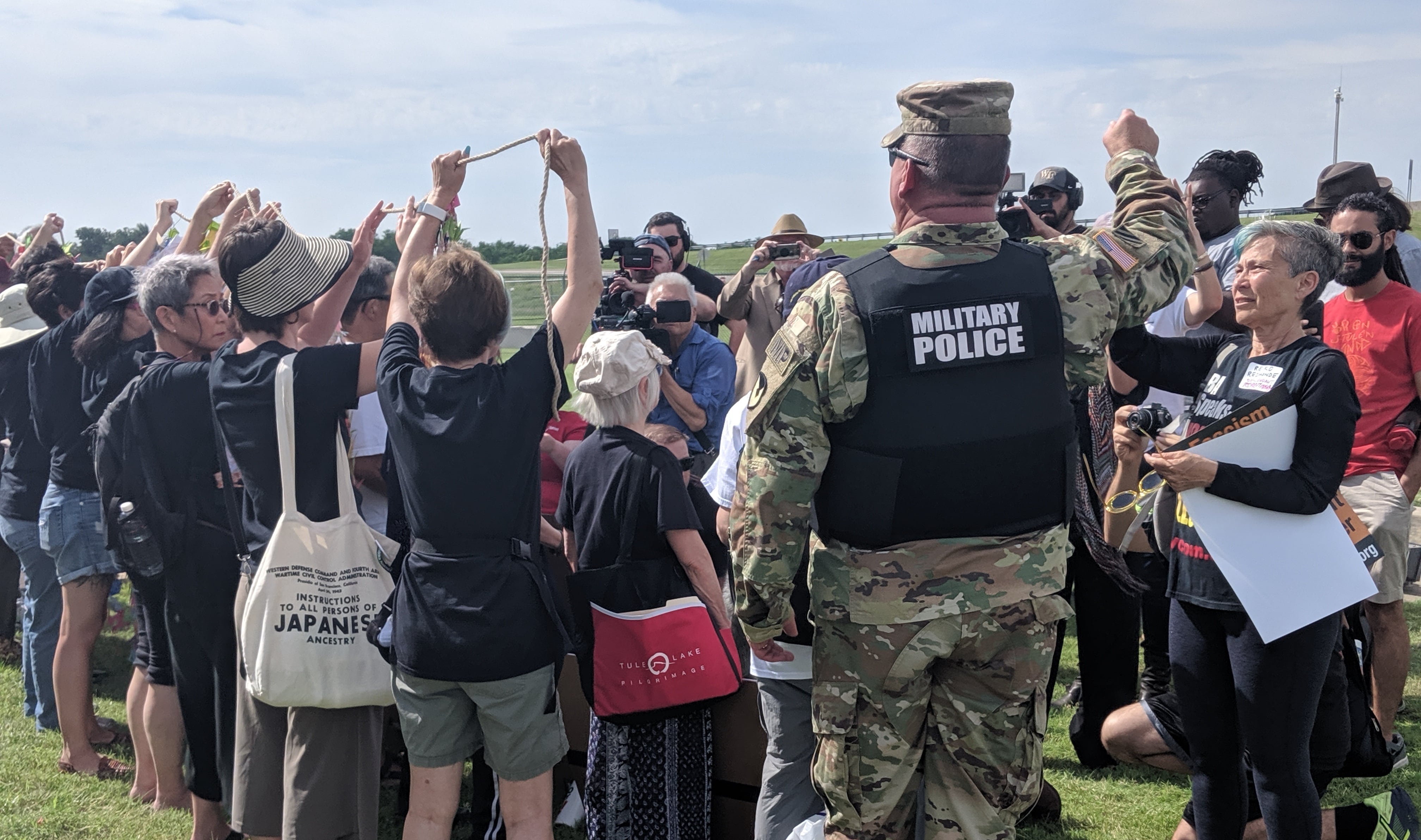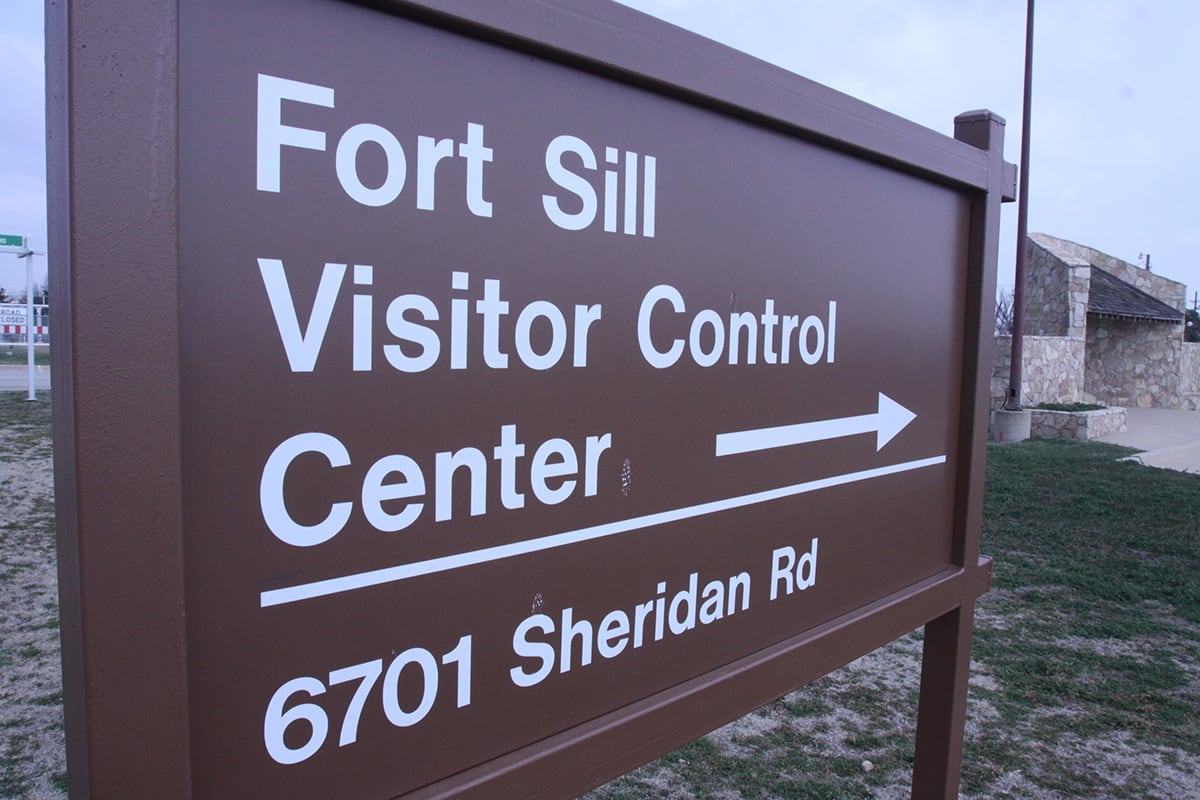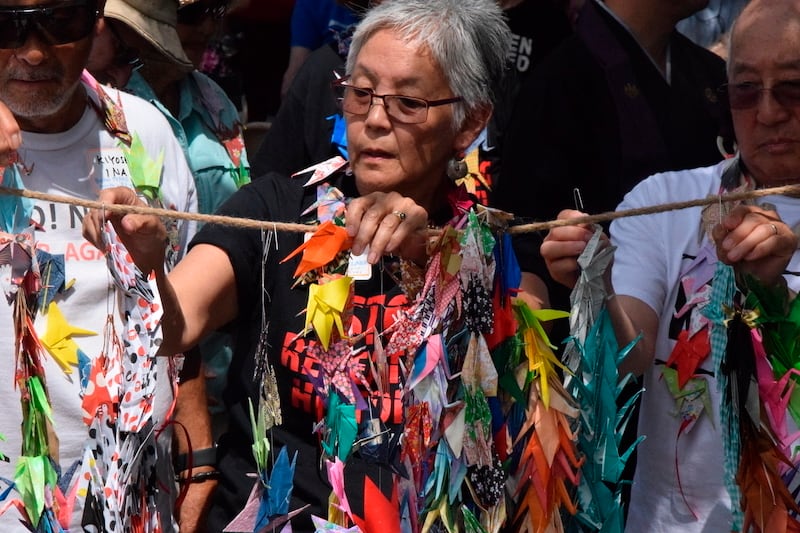A military police officer was suspended this week following an exchange outside of Fort Sill, Oklahoma, with Japanese-American World War II internment camp survivors who were protesting the upcoming use of the Army base as a temporary housing facility for migrant children.
The MP, a lieutenant colonel, was filmed telling the protesters that they were not allowed to congregate outside the gate, yelling: “You need to move today — now!” and “What don’t you understand? It’s English: Get out.”
“The command has suspended the officer and has launched an investigation,” Maj. Gen. Wilson Shoffner, the commanding general of Fort Sill, said in a statement to Army Times. “Additionally, the command has put appropriate measures in place to respect one’s right to protest outside our installation.”
Fort Sill did not release the name of the suspended officer.
The demonstration itself was held in a park near the base, according to Satsuki Ina, who is with Tsuru for Solidarity, which helped organize the event. The group planned to also hold a press gaggle in front of Fort Sill’s gates as part of the demonstration.
“When we had the telephone conversation with the person from Fort Sill, they said you can have the press conference here but you can’t have the demonstration," Ina told Army Times.
On the day of the event, they learned the permit for the press gaggle was denied as well, Ina said.
Demonstrating outside of the gates of military bases is not against the law, a Fort Sill spokesman said. “As long as they’re obeying the law, doing it peacefully, everybody’s entitled to that right," they added.
“Special interest groups and individuals have a right to express an opinion and protest in accordance with local laws," Shoffner said. "Our focus is to ensure the safety of our soldiers, families and civilians living and working on the installation. Coordination with local authorities will continue to ensure a combined awareness and community response.”
Ina said she didn’t want the military police officer to be punished, but hoped that his training would be updated to deal with sensitive situations.
“It would be very gratifying to know he’s going to get some training,” Ina, who spent her early childhood in an internment camp, said.
The interaction was concerning for her, because it “represented the kind of dehumanizing demeanor that we fear is what the children have to face and what we were confronted with when we were children during World War II.”

Fort Sill was home to an internment camp for Japanese-Americans during the 1940s. The use of it to hold migrant children has sparked comparisons to that blemish on American history.
Tom Ikeda, executive director of Densho, an organization that preserves Japanese-American history, participated in the protest Saturday.
“I know and respect that my rights as an American citizen come from the blood and lives of men and women who have placed themselves in harm’s way," Ikeda said. "I also know I have the responsibility to speak up when I see innocent people, especially vulnerable children, harmed. This is why I went to Fort Sill to speak against the opening of another detention camp for refugee children.”
RELATED

The ACLU of Oklahoma observed the protests. Nicole McAfee, a spokeswoman with the organization, said that they’re glad the base was ensuring personnel understand how to handle future protests as the federal government prepares to bring migrant children to facilities there.
“We hope that ... as 1,400 children are brought to the base, that everyone there will do their part to consider their words and actions and how those impact folks not only in front of cameras, but also behind the gates of Fort Sill," McAfee said.
The soldier in the video “has since been ‘trained’” on how he should handle protesters in the future, the Fort Sill spokesman said.
“We do believe he behaved incorrectly,” the spokesman added. “That’s not the way we conduct business.”
Ikeda noted that Fort Sill served as a way-station for some Japanese-American soldiers during World War II.
“It is ironic that Japanese American soldiers received field artillery training at Fort Sill at the same time Fort Sill was an internment camp for 700 Japanese immigrant men,” Ikeda said.
Those soldiers would eventually become part of the 442nd Regimental Combat Team, which served as a highly decorated, segregated Japanese-American combat unit in the European theater.
“I know this history well as a historian and the nephew of Staff Sergeant Francis Kinoshita, who was KIA from a German sniper bullet while fighting with the 442nd,” Ikeda said. “My uncle fought against fascism in Europe and for equality here in the United States even though he had to volunteer for military service from behind barbed wires and armed guards in an American concentration camp in Idaho.”
An executive order was signed by President Franklin D. Roosevelt following the Dec. 7, 1941, Pearl Harbor attacks that commanded the relocation of more than 100,000 people, many American citizens, under the auspices of preventing espionage during the war.
The camps continued until the end of the conflict and primarily effected those of Japanese descent.
Kyle Rempfer was an editor and reporter who has covered combat operations, criminal cases, foreign military assistance and training accidents. Before entering journalism, Kyle served in U.S. Air Force Special Tactics and deployed in 2014 to Paktika Province, Afghanistan, and Baghdad, Iraq.




